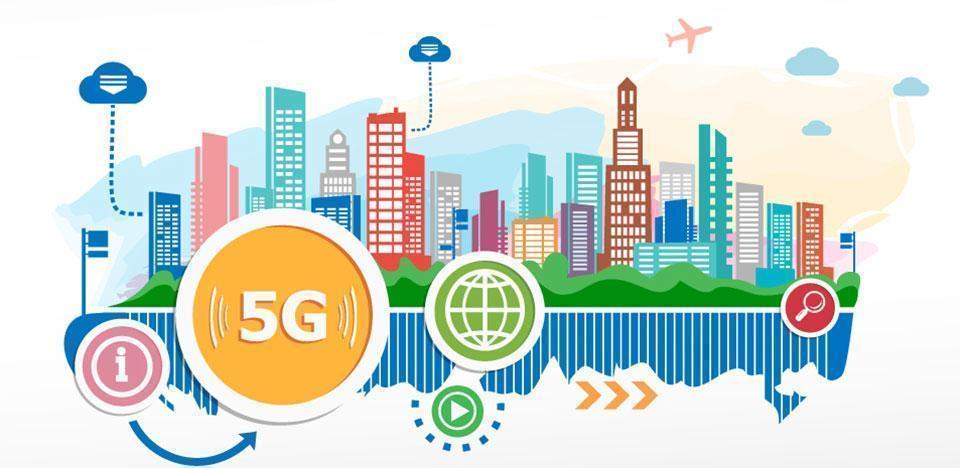5G, the fifth generation of wireless communication, is just around the corner. Speed, latency and capacity are going to be increased with the latest mobile network technology. 4G and 3G are slow compared to 5g networks. 5G technology offers a promising future for the Internet of Things (IoT).
These changes will facilitate the innovation to deliver new services and experiences for the end user. This is particularly so in order to engage the digital economy’s innovation community, who should become more aware of 5G and its roadmap to deployment from 2020.

Ten common questions asked about 5G
1. What is 5G?
This fifth generation will offer incredibly fast wireless communication that can be used to transmit all sorts of data. It won't replace cables entirely, but for some applications and industries, it could replace the need for them. An increasing number of big companies are investing now to prepare for the new mobile wireless standard.
2. When is 5G coming?
5G is already here. The first public 5G networks are expected to roll out in the UK and elsewhere in the world in 2020, with preliminary implementations for things like 5G likely to arrive in 2019 or 2020. This first commercial experience in the future of wireless technology was introduced at the 2018 PyeongChang Winter Olympics with some 5G showcases.
3. What does 5G offer?
In addition to increasing speed, 5G networks will offer lower latency, greater reliability, better connectivity from more places, and greater capacity, allowing more users and devices to be connected at the same time. The resulting infrastructure will make the IoT (Internet of Things) scalable, with more than 20,800 million "things" – including buildings, cars, machines and appliances– that are expected to be connected to the network for the moment 5G opens globally in 2020.
4. How will 5G change the world?
With the 5G network we can expect to download a movie on our smartphone in under three seconds; our car will be able to detect and navigate automatically, saving obstacles in the way; doctors can perform complex surgical procedures remotely using robots; cities will be able to gather omnipresent real-time information about traffic, time or crime. Current networks will not be able to handle the vast numbers of connections and data that will be transported, and that’s where 5G comes into the Internet of Things as it will provide the data speeds and response times required for society.
5. Will you need a new phone for 5G?
More than likely yes, you’ll need to buy a new phone to make the most of 5G when it arrives. Why? 5G will operate on different frequencies to both 3G and 4G, resulting in the potential need for a completely different modem chip in your phone. 5G vision requirements are for a mobile system delivering superfast mobile internet access everywhere with a very low delay.
6. How fast is 5G going to be?
No one actually knows how fast 5G will be, and that’s because 5G doesn’t technically exist yet, although 5G technology may increase speed to be up to 10 times faster than current 4G wireless systems. But what is certain is that, by deploying 5G throughout urban centres in a way that will help the cities develop new industries, companies will be more productive and tourism will increase.
7. What are the advantages of 5G?
Like all the previous generations, 5G will be significantly faster than its predecessor, 4G, and that will help SMEs to improve on existing services with relative ease. Plus, with greater bandwidth comes faster download speeds and the ability to run complex mobile internet apps. Mobile data use has exploded over the past five years and it might be necessary for business to use 5G because it will step up what 4G can no longer cope.
8. Which countries are using 5G technology?
Japan, the United States and South Korea will probably be the first countries in the world to adopt this 5G technology. Central London was the first live UK pre-standard 5G test and San Marino and Spain are already setting to test 5G network this year. San Marino is only 24 sq mi (61.2 sq km) and up to 30,000 citizens, and makes it a better testing ground for 5G. In the case of Spain, just two small towns (Segovia and Talavera de la Reina) are going to be the early recipients of 5G.
9. Is 5G safe and secure?
The vast numbers of connected devices present more opportunities for hackers to find an entry point. The Internet of Things also brings data privacy concerns given the large amounts of data that are collected, shared, analysed and stored. Governments worldwide are busy updating regulations to make them relevant in today’s every more connected world, and to provide for penalties for non-compliance. The UK will adopt the EU General Data Protection Regulation (GDPR) as it will still be a member when the legislation comes fully into force in May 2018.
10. How 5G network will benefit SMEs?
You can't buy it yet, but 5G technology is here, and now it's a matter of when it will become mainstream. 5G network might allow SMEs to offer more affordable services. However, to be able to reap this benefit, these businesses are also expected to modify their current business models, as well as their cost models, to match with these changes 5G will bring in many ways.
*The opinions and views expressed in the above articles are those of the author only and are for guidance purposes only. The authors disclaim any liability for reliance upon those opinions and would encourage readers to rely upon more than one source before making a decision based on the information. 

